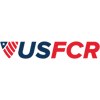The federal government is raising the bar again. Starting in 2025, all manufactured products and construction materials used in federally funded projects must meet a 65 percent domestic content requirement under the Buy American Act. This rule runs through 2028 and rises to 75 percent in 2029. If you're not auditing your supply chain now, you're risking more than a missed bid; you could be disqualified before you even get started.
This article is for both sides of the table:
-
Small manufacturers and builders who need a clear checklist
-
Large primes and integrators managing complex, multi-tier sourcing
Checklist for Manufacturers and Builders
Map your components
Start with a bill of materials. List the origin country and acquisition cost for every component. This is how you prove compliance under FAR 52.225-1 or DFARS 252.225-7000.
Hit the 65 percent threshold
This rule is based on the total cost of components, not labor or overhead. If 65 percent of the component cost doesn’t come from U.S. sources, your product doesn’t qualify. In 2029, that threshold increases to 75 percent.
Treat iron and steel separately
Structural iron and steel must be 100 percent melted and poured in the United States. That hasn’t changed.
Track waiver activity
Waivers aren’t private anymore. The Made in America Office publishes every request at madeinamerica.gov. If your competitor needs one and you don’t, highlight that in your technical narrative. That’s a real edge.
Update your contract language
Make sure your subcontract and supplier agreements reference the correct clauses. Use FAR 52.225-1 for civilian contracts and DFARS 252.225-7000 for DoD work. DFARS allows a temporary fallback to 55 percent for one year after the 75 percent rule hits in 2029.
Understand the waiver rules
Waivers are only granted under specific conditions: the product isn’t available in the U.S., it’s not in the public interest to require it, or the U.S.-made option is unreasonably expensive. They’re not a backup plan, they’re a high bar.
USFCR Case Study: Dig Defence
This woman-owned business needed to meet Buy American thresholds to qualify for GSA Schedule approval. USFCR helped them verify content, shift sourcing, and streamline the application. The result? A cleared path to multi-year federal purchasing and a permanent spot on the GSA Schedule.
Supply Chain Playbook for Large Primes
Dig into your tiers
Lower-tier parts like fasteners, PCBs, and adhesives often contain hidden foreign components. As the prime, you’re responsible for the entire chain. Require origin documentation at every level.
Use waiver data as competitive intel
If you can bid without a waiver and your competition can’t, you’ve got a pricing and compliance advantage. Waiver visibility lets you use that in your proposal strategy.
Plan for transportation rule changes
The FHWA ended its general waiver for manufactured products in highway construction. Starting October 1, 2025, all manufactured products in federally funded highway projects must meet the 65 percent rule. Rail and transit may follow. Agencies are reviewing everything under BABA, so expect more changes.
Secure domestic backup suppliers
A single offshore supplier creates risk. Prices shift. Lead times stretch. Identify U.S.-based alternatives now. That flexibility can protect your bid and keep your pricing firm.
Highlight IRA tax credits in renewables
Projects involving solar, wind, or energy storage can qualify for an extra 10 percent tax credit under the Inflation Reduction Act if the steel, iron, and manufactured products meet Buy American content requirements. If you’re enabling that for your buyer, make it clear in your proposal.
Know when TAA overrides BAA
Some contracts fall under the Trade Agreements Act, not the Buy American Act. That means products from countries like Canada, Mexico, and the UK may still qualify. Always read the solicitation carefully before committing to domestic sourcing requirements.
Understand the consequences of non-compliance
This isn’t just about missing a contract. If you certify compliance and your product doesn’t meet the requirement, you risk penalties under the False Claims Act, along with possible suspension or debarment from federal work.
Frequently Asked Questions
Do COTS items need to meet the 65 percent rule?
Most commercial-off-the-shelf (COTS) products are exempt. However, the Department of Defense can impose additional restrictions, especially for specialty metals. Always check the solicitation details.
How is component cost calculated?
Use the acquisition cost to the manufacturer. Do not include labor, overhead, or profit. This is consistent across both FAR and DFARS rules.
Can I still use foreign microelectronics?
COTS microelectronics may qualify, but if you’re sourcing from restricted countries like China, you’ll need documentation. Section 889 of the NDAA is tightening those rules, especially for sensitive or classified contracts.
Getting Ready With USFCR
-
SAM Assistance and Renewal
Fast, accurate, and done right the first time. -
Advanced Procurement Portal (APP)
Search for solicitations filtered by Buy American requirements. Track trends before they impact you. -
Live training every week
From waiver strategy to component tracking, we cover what matters most to your compliance and competitiveness.
Like setting up direct deposit. One wrong number, and your payment doesn’t show up.
What’s Next?
If you’re bidding on any contracts in 2025, start your component audit today. We’ll help confirm whether your product line is eligible and how to keep it that way as rules change. Contact USFCR today.
Top Articles
The 17 Most Common Types of Government Contracts Explained
Writing a Winning Capabilities Statement in 2025
Understanding Federal Set-Asides
#GovernmentContracting, #BuyAmerican, #FederalProcurement





